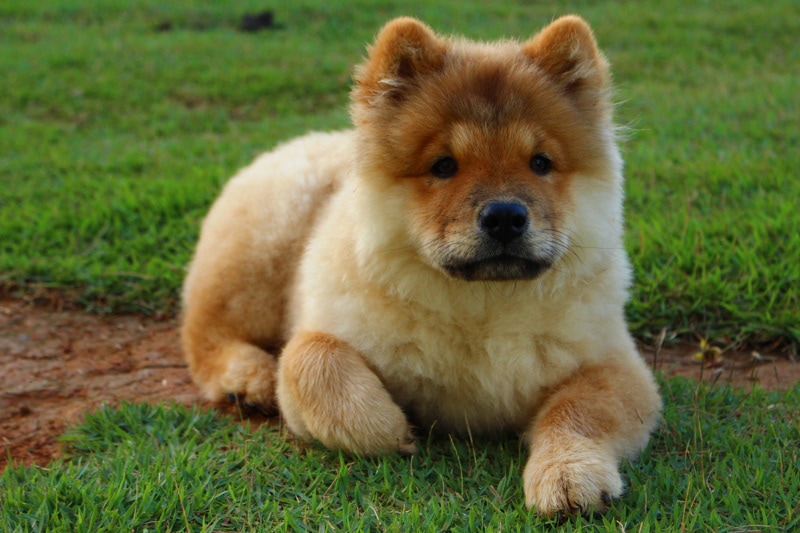Paw tucking is a common behavior among dogs, but have you ever wondered why they do it? While it may seem cute, there are actually several reasons behind this behavior. In this article, we will explore the various motivations behind a dog’s paw-tucking behavior. So, if you’re a dog owner or simply curious about our canine companions, keep reading to learn more.
The 9 Reasons for Dogs Tucking Their Paws
1. Showing Contentment and Happiness
Puppies often tuck their paws as a sign of contentment and happiness. This position allows them to feel more relaxed and comfortable. Dogs may also adopt this posture when they are around familiar faces, adding to their overall sense of security and contentment. [^1^]
2. A Sign of Submission or Nervousness
When dogs feel threatened or nervous, they may tuck their paws to appear less intimidating. This is a submissive behavior that dogs use to avoid confrontation. If you notice your dog consistently tucking its paws in certain situations, it might be a sign of submission or nervousness. [^1^]
3. Temperature Regulation
Dogs may tuck their paws to regulate their body temperature. Depending on the weather, they may tuck their paws to stay warm or cool themselves down. Smaller breeds and dogs with shorter coats are more likely to use paw tucking for temperature regulation. So, if you see your dog lounging with its paws nestled underneath it, it’s probably trying to stay comfortable. [^2^]
4. Protection from Snow or Rain
Just like us, dogs don’t enjoy being wet. Tucking their paws is a way for them to protect themselves from snow or rain. By curling up their paws beneath their bodies, they create a barrier between their feet and the ground, minimizing the amount of water and dirt that might get into their paws.
5. Distancing Themselves From Something
Dogs may also tuck their paws when they want to create distance between themselves and something they find unpleasant. It could be passing through a wet or dirty area, or simply avoiding confrontation with other animals or people. By tucking their paws, they become less noticeable and can avoid potential conflicts.
6. Learned Behavior
Sometimes, dogs pick up behaviors from their owners. If you spend a lot of time with your dog, they might imitate certain behaviors, including paw tucking. For example, if they have learned that tucking their paws leads to positive outcomes like treats or attention, they may continue to do so.
7. Alarmed Position
When dogs sense potential threats, they become alert and ready to react. Tucking their paws in this position allows them to quickly rise and sprint if needed. So, if you see your dog suddenly curl its paw underneath its body, it may be preparing for a fight or flight reaction.
8. Knuckling
If a dog is tucking its paws downwards, especially the front ones, it could be a sign of a more serious issue. Knuckling can be caused by disease, injury, or discomfort in their paws. If you notice your dog scraping, dragging, or walking on the tips of their paws, it’s crucial to consult a veterinarian to determine the underlying cause and seek appropriate treatment.
9. Breed Predisposition
Certain dog breeds are more prone to paw-tucking behavior. Breeds such as Border Collies, Labradors, Poodles, and Bulldogs are commonly associated with paw curling. However, breeds with shorter legs, like Dachshunds, may not easily tuck their paws due to their body structure.
Frequently Asked Questions
Q: How can I prevent my dog from tucking its paws?
A: Understanding the reason behind your dog’s paw-tucking behavior is the first step. Once you know the cause, you can take appropriate action. For example, if it’s due to discomfort or injury, consult a veterinarian. If it’s a learned behavior, positive reinforcement training might help. Each case is unique, so it’s essential to address the specific reason behind your dog’s paw-tucking behavior.
Q: Is paw tucking a problematic behavior?
A: Paw tucking is usually harmless and can be a normal part of a dog’s behavior. However, if you notice any signs of discomfort, pain, or abnormal gait, it’s best to consult with a veterinarian to rule out any underlying issues.
Q: Are there any other behaviors I should be aware of?
A: Dogs exhibit a wide range of behaviors, and paw tucking is just one of them. It’s crucial to observe your dog’s overall behavior and body language to understand their needs and emotions better. If you have any concerns about your dog’s behavior, consult a professional for guidance.
Conclusion
Dogs tuck their paws for various reasons, and it’s not always easy to determine the exact cause. However, as a responsible dog owner, you can observe their behavior, listen to their needs, and seek help from professionals when necessary. By understanding why dogs tuck their paws, you can provide them with the care and comfort they deserve.
[^1^]: Puppies and Contentment
[^2^]: Body Language: Dog Paws
